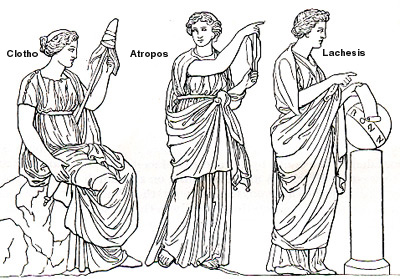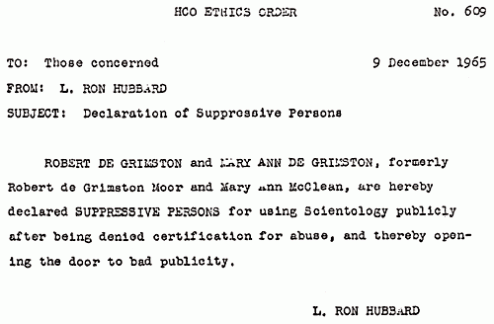Carlo Gesualdo (1566 – 1613), Prince of Venosa, was an Italian Renaissance nobleman and composer widely renowned amongst music aficionados for his compositions that were centuries ahead of their time. The beauty of his famed madrigals is eclipsed only by the savage ferocity with which he committed one of the most notorious acts of violence in the history of western music.

Gesualdo had long been acquainted with Donna Maria D’Avalos, his first cousin, but it wasn’t until the year 1586 that her beauty overwhelmed him and he took her hand in marriage. Several years into the marriage Donna Maria began an affair with the Duke of Andria that was well known to many, but not to Gesualdo. It took two years before news of the affair reached him, at which point he resolved to catch the lovers mid-tryst. In 1590 Gesualdo allegedly left on a hunting trip and, once the lovers were in each other’s arms, burst into the bed chamber and stabbed the two where they lay (some reports even alleging that Gesualdo forced the Duke to don the lady’s eveningwear before he slaughtered the emasculated interloper).
Far from keeping the violent affair out of the public eye, Gesulado strew the remains of his wife and the Duke in front of his Florentine manor for all to see. The murders, in fact, became fodder for the Renaissance equivalent of a media frenzy, inspiring a generation of tawdry and sensationalistic poetry. This publicity did little to put Gesualdo’s freedom in danger since noblemen of the day were immune from legal prosecution. He was, however, officially censured by the Vatican, which issued the claim that Gesualdo’s violent acts betrayed, “secular perversions and a lurid internal conflict setting decency and morality at the feet of carnal desires.” Despite the disapproving glare of the Vatican, Gesualdo went on to produce some of his most cherished composition in the 23 years between the murders and his death. These years were marred, however, by a debilitating depression that caused a desperate Gesualdo to go as far as ordering his servants to physically beat him on a daily basis.

The relationship between creative genius and the propensity for brutality is a common theme in the evaluation of historically significant artists. The self-mutilation of Vincent Van Gogh, the bloody suicide of Earnest Hemingway, the reckless, pistol-waving outbursts of Phil Specter. These well-known instances illustrate the savage potential associated with the sharpest creative minds. Authors Cecil Gray and Philip Heseltine summarized this coupling of notions well, in this case focusing specifically on musical creativity, in their book Carlo Gesualdo, Prince of Venosa, Musician and Murderer:
“But more particularly is there a definite connection between music and murder, although it may not be readily apparent. Not that many musicians have actually committed murders (apart from Gesualdo, one can only think of Salieri who, as everyone knows, poisoned Mozart); nor, strange to say, have many musicians been murdered themselves, except Mozart and Stradella. The connection between the two activities is much more subtle but nonetheless close. In the first place, the significant fact should be noted that the beginning of the decline of murder as an art dates from precisely the same period as the development of music as a personal expression, i.e., the beginning of the 17th century. In the middle ages music was more a craft than an art, because the emotions which we now express in music were then actually expressed in life. In these good old days one committed a murder if one felt like it, and thought no more about the matter; today we write an Elektra or a Cavalleria Rusticana instead, in order to work off our feelings. In definite relation to the increased difficulties attendant upon the practice of murder, music has become more and more sadistic. In place of inflicting the utmost pain on a single individual, we outrage the ears of thousands.”
Some Further Reading:
An entry from Reference.com about Gesualdo
An essay focusing on Gesualdo the murderer
Some of Gesualdo’s music on Rhapsody.com
Permalink
Leave a Comment

Deadly nightshade, alternatively known as belladonna, is an herbaceous plant found in North America, Europe, and Asia. A delicate-looking, beautiful plant with a legendary potency, its role in history has stemmed primarily from the effects of chemicals naturally occurring in the plant, which include the hallucinogenic toxin scopolamine. It is also from the berries of deadly nightshade that the drug atropine, included on the World Health Organizations Essential Drugs list, is derived.

Deadly nightshade was dubbed “Atropa belladonna” by Carl Linnaeus, the father of binomial nomenclature, in his 1753 book Species Planatarum.
The plant’s genus, Atropa, comes from the name of the Greek Fate Atropos, who was believed to wield scissors that could cut short the thread of human life. This is a reference to the severe toxicity of the plant’s berries, a handful of which, if eaten, can plunge an adult into a nightmare of confused convulsions and hallucinations, followed by a torturous death. Extract from the plant has, according to legend, been used as a poison since ancient times. Macbeth, King of Scots from 1040 – 1057, was rumored to use atropine as a sedative and poison to surreptitiously best his foes. There have also been reports of deadly nightshade being employed by torturers, who used it to disorient and weaken their unfortunate subject.

The three Moirai, or Fates, of Greek mythology. Atropos is pictured in the center holding her “abhorred shears”.
The toxic nature of the chemicals contained in deadly nightshade is such that, in small doses, parts of the plant have been historically used recreationally and spiritually to induce hallucinations, perhaps most notable by European witches and shamans in their notorious “flying ointments”. The chemicals scopolamine and atropine can, according to shamanistic lore, create the sensation of physical flight (along with a host of other hallucinations and delusions) when ingested orally or applied to the skin in ointment form. A tincture of deadly nightshade was also purportedly drunk by ancient Greeks who visited the legendary Oracle of Delphi, in order to induce prophetic visions.

An ancient depiction of the Oracle of Delphi giving a mystical consultation.
The history of deadly nightshafe, one concerned both with death and with a heightened experience of life, speaks to the dichotomous nature of this powerful plant. Even its two most common names, deadly nightshade and belladonna, associate the plant first with death and darkness, and second with feminine beauty. Perhaps these contrasting interpretations are not separated by an unbridgeable gap, but are rather two poles of one notion. It could be that the seductive nature of this plant, which can cause spiritual visions, is amplified by its potentially fatal potency. This combination of erotic and thanatopic qualities is reminiscent, appropriately enough, of the Greek Fates themselves – three women who determine the course of mortal life through enchanting song, weave the course of events into an unchangeable fabric, and finally cut the life thread short.
Some Further Reading:
Botanical.com’s entry on Deadly Nightshade
An inquiry into flying ointments
Erowid.org’s page devoted to Belladonna
Drugs.com’s entry dedicated to atropine
A large collection of information regarding the Moirai (Greek Fates)
Permalink
7 Comments

"Circe Offering the Cup to Odysseus" by John William Waterhouse, depicting the sorceress Circe from Homer's Odyssey
While wandering through the dusty back-alleys of the internet, occasionally one hears whispers of a subject so unspeakably terrifying that it is rarely addressed directly. One such topic, regarding which I have heard mention of countless times during my years as an investigator into the occult but have still found precious little information, is an organization known as the Circe Order of Dog Blood (with Circe sometimes spelled Kirke). Believed to have been active in Southern California and perhaps Ohio during the early 1970s, this alleged Satanic cult has been blamed for, or at least linked to, acts of shuddering violence.

Most references to the Order are brief mentions of its possible association with famed cult leader Charles Manson, pictured above. There is no evidence to suggest, however, that Manson was involved with the Order’s administration. Some sources suggest that a woman identifying herself as Circe (a name harkening to the mythological Greek sorceress who turned men into pigs and surrounded herself with animals) was the central figure of the Order. According to author Adam Gorightly, Circe briefly owned an occult shop in Toledo, Ohio, where she actively accumulated cult members and led them in ritualized dog slaughter. Gorightly hypothesizes that Circe was and alter-ego of Mary Ann DeGrimston, ex-wife of Robert DeGrimston. DeDrimston is notorious for founding and leading of The Process Church of The Final Judgment, an early offshoot of the Church of Scientology. (Ironically enough, one of the Process’ retreat centers in Arizona transformed into the Best Friends Animal Society, a non-profit organization currently dedicated to animal rescue and welfare).

Robert DeGrimston pictured alongside Mary Tyler Moore in literature promoting the Process Church of The Final Judgment
While very little is known about the Circe Order of Dog Blood, it has become something of a scapegoat for unsolved, gruesome crimes committed during the early 1970s. Author Bill Ellis mentions rumors of “Santa Cruz dog-skinners”, who may have been one and the same as the Order, or perhaps the infamous Four Pi Movement, a secret contingency within the Process. One inside source claimed of the Four Pi Movement that:
“The ceremonies involved use of a portable crematorium to dispose of the bodies, a wooden altar adorned with dragons and a wooden morgue table. There were as many as forty people in attendance at these sacrifices. The instrument of sacrifice was a set of 6 knives welded into a football shaped holder. The heart was eaten…”
Ellis goes on to link the Four Pi Movement with:
“…a group called “Kirke [or Circe] Order of Dog Blood.” This group allegedly met on the full and new moons on secluded beaches outside of Los Angeles to sacrifice black animals of all sorts, cats and dogs included.”
These organizations, including the Process and the Manson Family, are allegedly linked through this ritual of drinking animal blood. The Circe Order of Dog Blood, however, may have had the distinction of performing human sacrifice as well. According to Gorightly:
“This mysterious ‘Circe’ also brought property adjacent to a location reported as being a site where satanic rituals involving human sacrifice were performed. In 1985, law enforcement officials dug up the site, discovering ritualistic paraphernalia, although no evidence of murder was uncovered. Shortly before the police raid, the occult shop in Toledo closed and ‘Circe’ disappeared.”
And here, it seems, is where the trail dies. When it comes to scholarly discussion of Circe and her infamous Order, apparently speculation is the best one will find. Whether a sinister cadre that incinerated humans, skinned dogs, and drank blood, or just a suspicious organization with the misfortune of rubbing shoulders with the criminals involved in the Four Pi Movement and the Manson Family, the Circe Order of Dog Blood represents the horrifying fact that humans are capable of cooperating to commit acts of nearly unthinkable ruthlessness under the guise of religious ritual.
Some Further Reading:
A link to text from the book Raising the Devil by Bill Ellis, from which some of the above citations were taken
A blog with useful information about the mysterious Kirke
A site containing extensive writing about the Process Church of the Final Judgment
An article on Serial Killer Central about the Four Pi Movement
A 2008 article about a family dog in Springfield, MO that disappeared, only to be found with its skin and heart removed
An article exploring the Circe of Greek mythology
Here is an image that I couldn’t fit into this article, but I would like to share nonetheless. It shows a letter from Church of Scientology founder L. Ron Hubbard concerning the DeGrimstons:

Permalink
47 Comments









